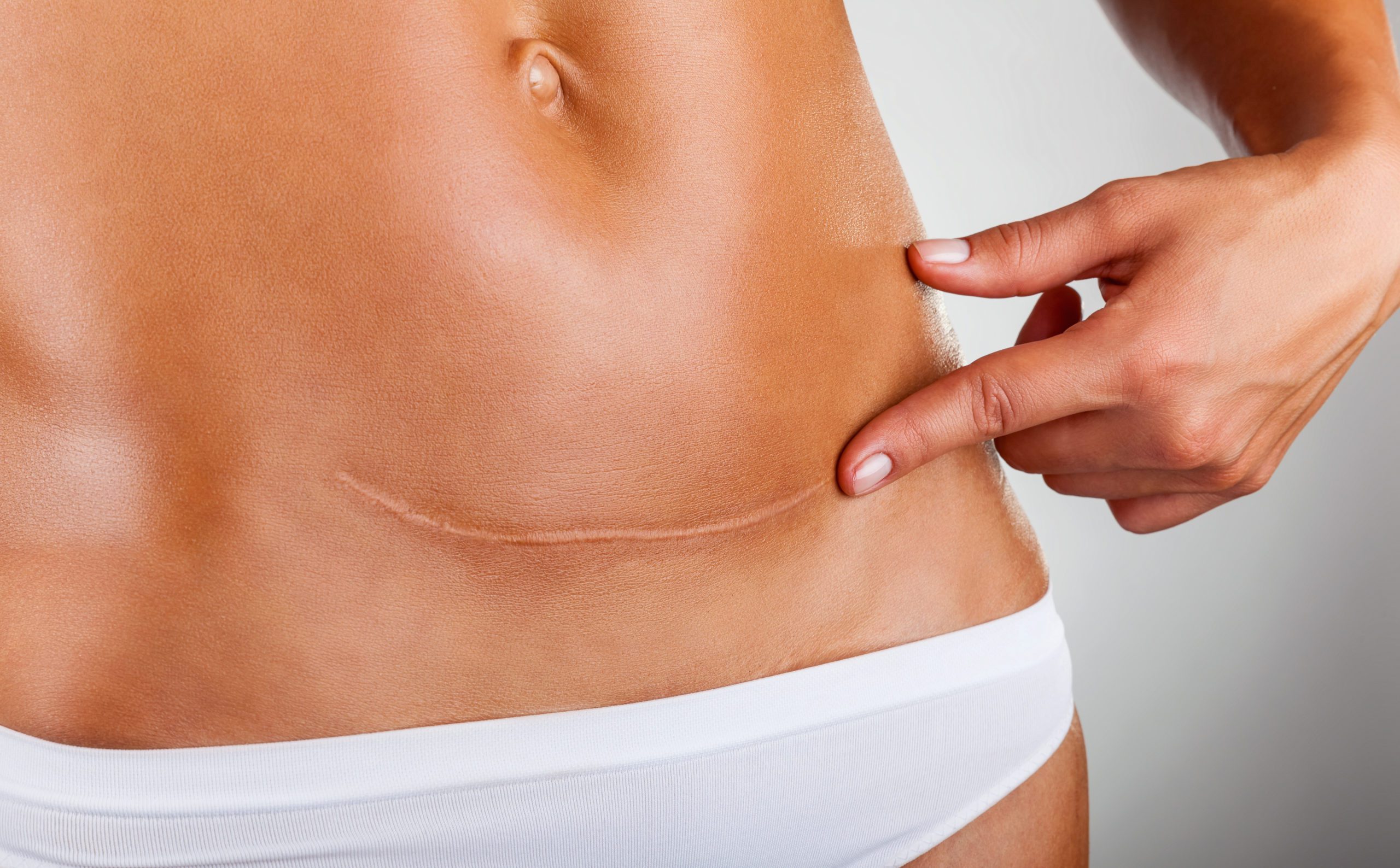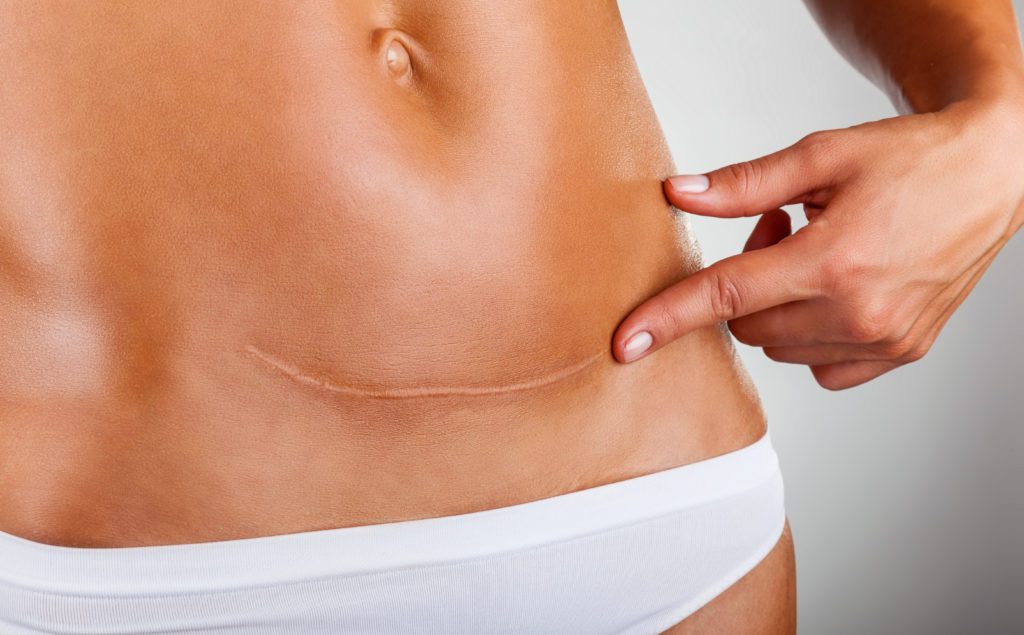Motherhood can be very demanding emotionally and physically. Many moms are experiencing harder recoveries, especially after c-sections, and I wanted Ingrid & Hallie to share some more information on the topic with our readers. I met Ingrid a few weeks ago and realized we had the same mission, helping new moms with the transition to parenthood/motherhood. Her desire was due to her career as a physical therapist and, of course, focused on the physical aspect of c-section scar care; a topic that is very rarely spoken about. – Gabriela Gerhart
Managing your Cesarean scar may be more important than you think… Ingrid Hanna, MSPT, CSCS, OCS Hallie Ager, dPT, PT
While often overlooked, scar management after a Cesarean section is an important part of postpartum recovery. Poor scar management can lead to infection, delayed healing, restrictions in flexibility/range of motion, and PAIN. Here are some simple tips new moms can use to help optimize tissue healing and recovery.
From the start, your incision should be kept clean and dry. Try not to lift anything heavier than your newborn for the first 6-8 weeks in order to allow for ample healing. When lifting your newborn, use proper body mechanics and engage your abdominal and pelvic floor muscles for added support. Moms might want to consider an abdominal binder and/or paper tape fixation to support the tissue and aid in healing. We’ve found placing a soft cloth between your incision and your waist line can help limit irritation. Try to maintain good posture with plenty of support when nursing to help keep pressure off your incision. When rolling in bed, utilize a “log roll” by rolling your upper and lower body at the same time. When moving from lying on your back to sitting, always roll to your side first before lowering your legs off the edge of the bed and pushing up to a seated position with your arms. These techniques can help decrease the stress on both your incision and your low back. Finally, performing deep breathing ensures adequate expansion of the thoracic and abdominal cavities and can help prevent adhesions.
Desensitization and scar massage are two important components to good scar management. They can help increase circulation to the tissue, improve extensibility of the tissue, promote better scar healing, and prevent formation of adhesions.
During the healing process, moms can desensitize the surrounding area (3-6 inches away from the incision) by touching the skin with a soft object such as a cotton ball, piece of flannel, or tissue. Over time the skin should become less sensitive and rougher materials such as a wash cloth, paper towel, or denim can be used. Patting and tapping around the scar can also help to desensitize the area and when gentle, sustained touch is tolerated, you can begin massaging. Gently massage the surrounding skin (3-6 inches away from the incision) by moving two fingers in small circles. This can help to increase blood flow and hasten healing.
Once the incision is fully healed and no scabbing is present (typically 4-6 weeks after delivery, make sure to check with your healthcare provider if you are unsure), scar massage and desensitization can be performed over the scar. Place two fingers directly on the scar and move it slowly in one direction. When the skin stops moving or feels taut, continue holding firm pressure on the scar for 1-2 minutes. Start out gently and then progress to a deeper, stronger massage as tolerated. The benefit is usually greatest when working as firmly as possible without causing pain. A strong pulling or burning sensation is okay, but pain should be avoided. Attempt each of the directions outlined below and focus on those where the most restriction is felt. Perform 5 to 15 minutes per day, as tolerated.
1. Push & Pull: Push and pull the skin horizontally and vertically
2. Longitudinal Stretch: Anchor one side and stretch across the length of the scar
3. Inferior Stretch: Anchor above and stretch downward
4. Cross-pattern Stretch: Anchor above and stretch diagonally downward or upward.
5. Skin Rolling: Raise perpendicular and roll the skin along the length of the scar
6. Plucking: Raise parallel and roll section between your fingers. If skin slips out of your fingers, the scar may not be ready for this technique yet.
Ingrid Hanna and Hallie Ager are physical therapists, moms, and the co-founders of Back After Baby- an online postpartum recovery program for moms at any stage of motherhood. After years of providing physical therapy to moms and after having their own children, Ingrid and Hallie are convinced rehabilitation is the key to minimizing musculoskeletal pain after pregnancy and childbirth. Together, they developed an online program that provides women with the guidance and resources they need to fully recovery from pregnancy and childbirth and return to an active lifestyle, free from pain and at less risk of injury. Ultimately they aim to improve the current standard of postpartum care. For more information, visit www.backafterbaby.com.











